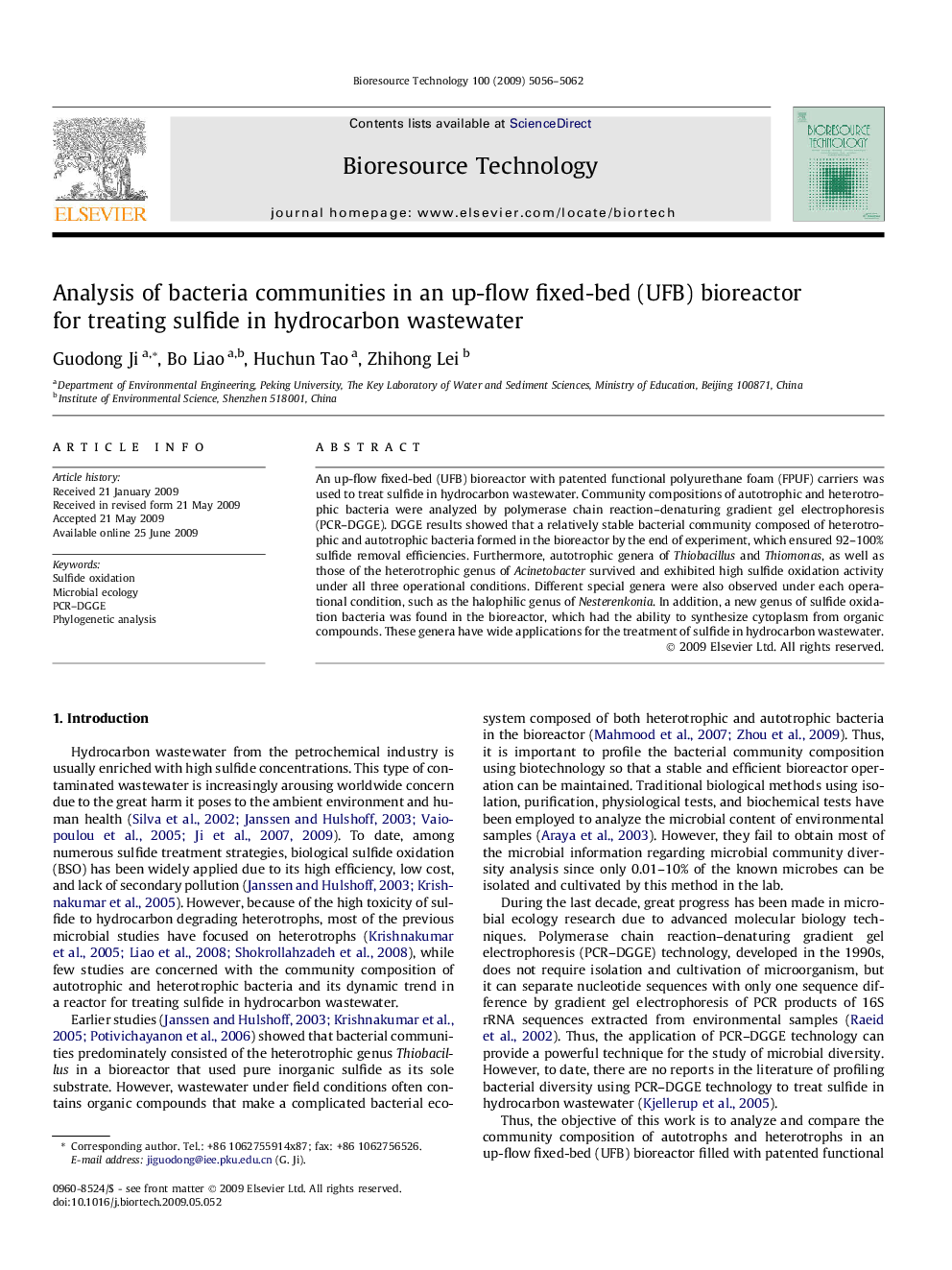| Article ID | Journal | Published Year | Pages | File Type |
|---|---|---|---|---|
| 684456 | Bioresource Technology | 2009 | 7 Pages |
Abstract
An up-flow fixed-bed (UFB) bioreactor with patented functional polyurethane foam (FPUF) carriers was used to treat sulfide in hydrocarbon wastewater. Community compositions of autotrophic and heterotrophic bacteria were analyzed by polymerase chain reaction-denaturing gradient gel electrophoresis (PCR-DGGE). DGGE results showed that a relatively stable bacterial community composed of heterotrophic and autotrophic bacteria formed in the bioreactor by the end of experiment, which ensured 92-100% sulfide removal efficiencies. Furthermore, autotrophic genera of Thiobacillus and Thiomonas, as well as those of the heterotrophic genus of Acinetobacter survived and exhibited high sulfide oxidation activity under all three operational conditions. Different special genera were also observed under each operational condition, such as the halophilic genus of Nesterenkonia. In addition, a new genus of sulfide oxidation bacteria was found in the bioreactor, which had the ability to synthesize cytoplasm from organic compounds. These genera have wide applications for the treatment of sulfide in hydrocarbon wastewater.
Related Topics
Physical Sciences and Engineering
Chemical Engineering
Process Chemistry and Technology
Authors
Guodong Ji, Bo Liao, Huchun Tao, Zhihong Lei,
